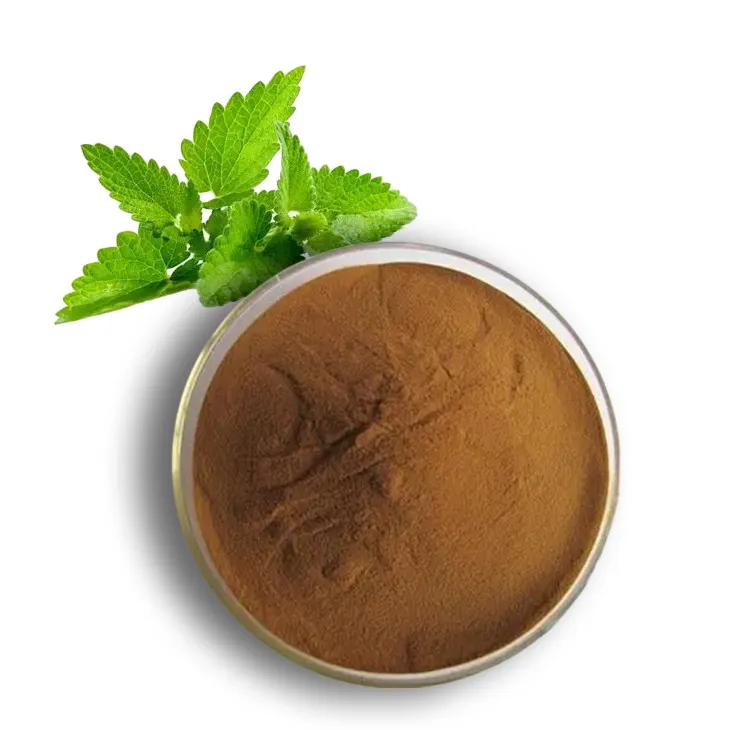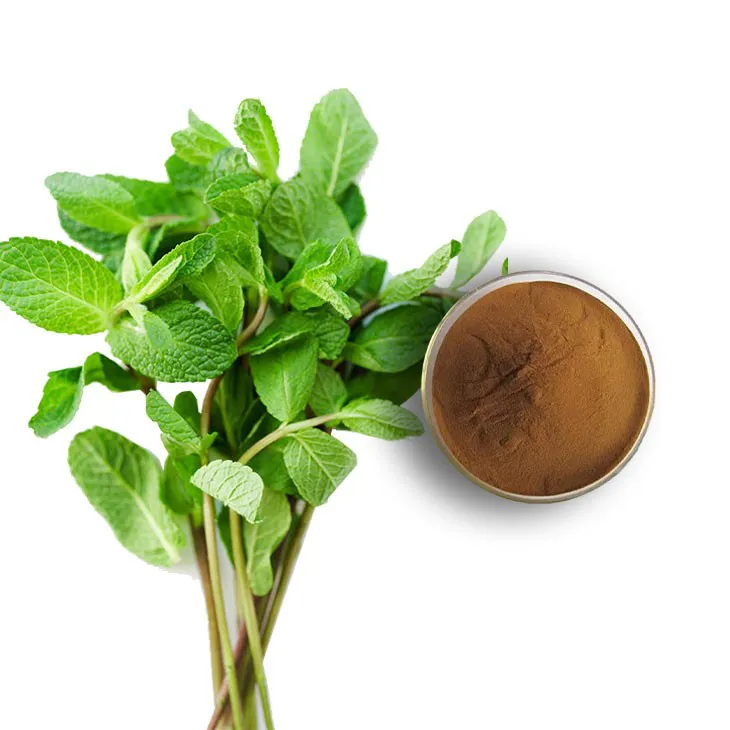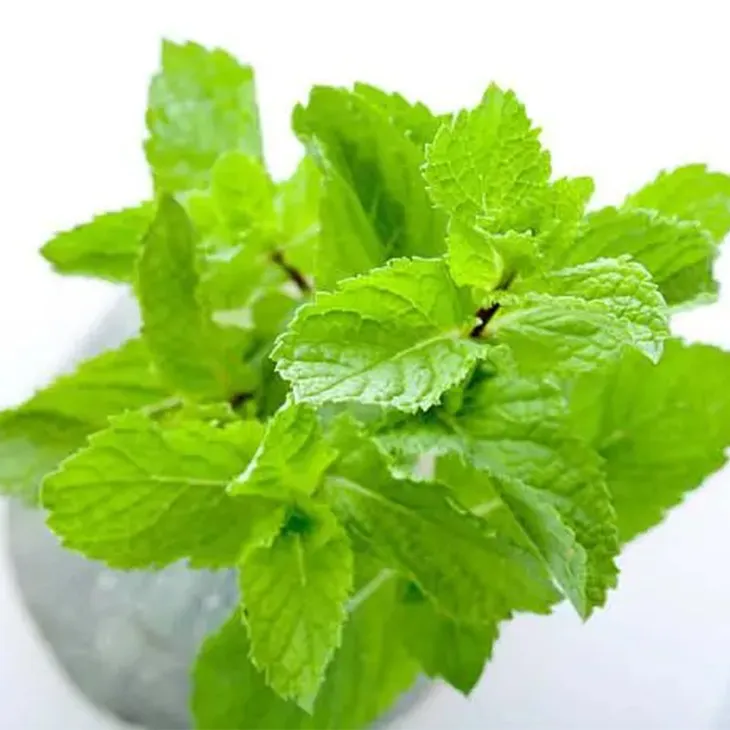- 0086-571-85302990
- sales@greenskybio.com
Extraction process of peppermint extract powder.
2024-11-26

1. Introduction
Peppermint Extract Powder has found extensive applications in numerous industries, including the food, beverage, cosmetic, and pharmaceutical sectors. Its unique flavor, refreshing aroma, and potential health benefits are the main reasons for its popularity. However, the extraction process of Peppermint Extract Powder is a complex and multi - step procedure that requires careful attention to detail at each stage.

2. Selection of fresh peppermint leaves
The first and crucial step in the extraction process is the selection of fresh peppermint leaves. High - quality leaves are essential for obtaining a good - quality extract powder.
2.1. Source of peppermint
Peppermint is typically grown in specific regions with suitable climates. It is important to source the leaves from reliable growers who follow good agricultural practices. This ensures that the leaves are free from pesticides and other contaminants.
2.2. Criteria for selection
When selecting peppermint leaves, several factors need to be considered:
- Appearance: The leaves should be bright green in color, without any signs of yellowing or browning. This indicates their freshness.
- Texture: They should be firm and not wilted. Soft or shriveled leaves may be a sign of poor quality or improper handling.
- Aroma: A strong and characteristic peppermint aroma is a key indicator of good - quality leaves. Leaves with a weak or off - smell should be avoided.

3. Washing of peppermint leaves
After the selection process, the peppermint leaves need to be washed thoroughly to remove impurities.
3.1. Purpose of washing
Washing serves multiple purposes:
- It removes dirt, dust, and other particulate matter that may be present on the leaves.
- It helps to eliminate any small insects or their eggs that might be attached to the leaves.
3.2. Washing methods
There are different ways to wash peppermint leaves:
- Gentle rinsing under running water: This is a simple and commonly used method. The leaves are placed in a colander or sieve and rinsed gently with cold running water. This helps to wash away the surface impurities without damaging the leaves.
- Soaking in water: In some cases, the leaves can be soaked in clean water for a short period (usually a few minutes). This can be more effective in removing stubborn dirt or insects. However, care should be taken not to soak the leaves for too long as it may cause leaching of some of the essential compounds.

4. Extraction methods
Once the peppermint leaves are clean, an appropriate extraction method needs to be employed to draw out the active compounds from the leaves. Solvent extraction is one of the most commonly used methods.
4.1. Solvent extraction
Principle: Solvent extraction is based on the principle that certain solvents can dissolve the active compounds present in peppermint leaves while leaving behind the insoluble plant material.
- Selection of solvent: Different solvents can be used for peppermint extraction, such as ethanol, ethyl acetate, and hexane. Ethanol is a popular choice as it is relatively safe, effective in extracting a wide range of compounds, and is suitable for applications in the food and pharmaceutical industries where safety and purity are important considerations.
- Extraction process: The clean peppermint leaves are typically placed in a container and covered with the selected solvent. The ratio of leaves to solvent can vary depending on the desired concentration of the extract. The mixture is then allowed to stand for a certain period, usually several hours to a few days. During this time, the solvent penetrates the plant cells and dissolves the active compounds such as menthol, menthone, and other essential oils.
4.2. Other extraction methods
Besides solvent extraction, there are other methods that can be used for Peppermint Extract Powder extraction:
- Steam distillation: In steam distillation, steam is passed through the peppermint leaves. The heat causes the volatile compounds in the leaves to vaporize. These vapors are then condensed and collected. Steam distillation is mainly used for the extraction of essential oils from peppermint. However, it may not be as effective in extracting all the active compounds as solvent extraction.
- Supercritical fluid extraction: This is a more advanced extraction method that uses supercritical fluids, such as supercritical carbon dioxide. Supercritical fluids have properties between those of a gas and a liquid. They can penetrate the plant material more effectively and selectively extract the desired compounds. Supercritical fluid extraction is often used for high - value applications where high purity and specific compound extraction are required. However, it requires specialized equipment and is more expensive than other methods.
5. Purification of the extract
After the extraction process, the resulting extract contains not only the desired active compounds but also some unwanted substances. Therefore, purification is necessary.
5.1. Reasons for purification
- To remove impurities such as plant debris, waxes, and pigments that may have been co - extracted with the active compounds.
- To separate any residual solvent from the extract if solvent extraction was used. This is important to ensure the safety and quality of the final product, especially in applications where solvent residues are not acceptable, such as in the food and pharmaceutical industries.
5.2. Purification methods
There are several methods for purifying peppermint extracts:
- Filtration: Simple filtration can be used to remove large particles of plant debris. This can be done using filter papers or filters with different pore sizes depending on the size of the particles to be removed.
- Centrifugation: Centrifugation can be used to separate heavier particles from the extract. The extract is placed in a centrifuge tube and spun at a high speed. The denser particles will sediment at the bottom of the tube, allowing the supernatant (the purified extract) to be separated.
- Chromatography: Chromatography is a more sophisticated method for purifying peppermint extracts. Different types of chromatography, such as column chromatography or high - performance liquid chromatography (HPLC), can be used. Chromatography separates the components of the extract based on their different affinities for a stationary phase and a mobile phase. This allows for the separation of the desired active compounds from the unwanted substances.
6. Drying and powdering
The final step in the production of peppermint extract powder is drying and powdering the purified extract.
6.1. Drying
Importance of drying: Drying is necessary to remove the remaining moisture from the extract. Moisture can cause spoilage, affect the stability of the active compounds, and reduce the shelf - life of the final product.
- Air drying: This is a simple and traditional method. The purified extract is spread out in a thin layer in a well - ventilated area and allowed to dry naturally. However, air drying can be time - consuming and may be affected by environmental factors such as humidity.
- Vacuum drying: Vacuum drying is a more efficient method. In a vacuum dryer, the pressure is reduced, which lowers the boiling point of water. This allows the moisture to be removed more quickly at a lower temperature, which is beneficial for preserving the heat - sensitive active compounds in the peppermint extract.
- Freeze - drying: Freeze - drying, also known as lyophilization, is a high - quality drying method. The extract is first frozen and then the ice is removed by sublimation (direct conversion from solid to gas) under reduced pressure. Freeze - drying results in a very dry product with excellent preservation of the active compounds and a long shelf - life. However, it is also a more expensive method.
6.2. Powdering
Once the extract is dried, it can be powdered.
- Grinding: The dried extract can be ground into a fine powder using a mortar and pestle or a mechanical grinder. The fineness of the powder can be adjusted according to the requirements of the final product. For example, in the cosmetic industry, a very fine powder may be preferred for better skin absorption.
- Micronization: Micronization is a more advanced technique for producing very fine powders. It uses specialized equipment to reduce the particle size of the dried extract to the micron level. Micronized peppermint extract powder may have better solubility and bioavailability in some applications.
7. Conclusion
The extraction process of peppermint extract powder is a complex and multi - step procedure that involves careful selection of raw materials, thorough washing, appropriate extraction, purification, and finally drying and powdering. Each step is crucial for obtaining a high - quality peppermint extract powder with desirable properties for various applications in different industries.
FAQ:
Q1: What are the main steps in the extraction process of peppermint extract powder?
The main steps include carefully selecting fresh peppermint leaves, thoroughly washing them to remove impurities, using a suitable extraction method like solvent extraction to draw out active compounds, purifying the extract to eliminate unwanted substances, and finally drying and powdering it to obtain the peppermint extract powder.
Q2: Why is it necessary to wash the peppermint leaves thoroughly?
It is necessary to wash the peppermint leaves thoroughly to remove impurities such as dirt, dust, and other contaminants. These impurities could affect the quality of the extract and may introduce unwanted substances into the final peppermint extract powder.
Q3: What kind of solvents can be used for solvent extraction in the process?
Common solvents that can be used include ethanol, which is a popular choice as it is relatively safe and effective in extracting the active compounds from peppermint leaves. Other solvents may also be considered depending on specific requirements and extraction conditions.
Q4: How is the extract purified?
The purification of the extract can be achieved through various methods such as filtration, which can remove solid particles, and chromatography techniques, which can separate different components based on their chemical properties to eliminate unwanted substances.
Q5: What factors may affect the quality of peppermint extract powder during the extraction process?
Several factors can affect the quality. The quality of the fresh peppermint leaves used is crucial. If the leaves are damaged or not fresh, it may result in a lower - quality extract. The extraction method and its parameters, such as the type and concentration of the solvent, extraction time and temperature, also play important roles. Additionally, the purification and drying processes need to be carefully controlled to ensure high - quality peppermint extract powder.
Related literature
- The Extraction and Characterization of Peppermint Extract"
- "Optimization of Peppermint Extract Powder Production"
- "Advanced Techniques in Peppermint Extract Powder Extraction"
- ▶ Hesperidin
- ▶ Citrus Bioflavonoids
- ▶ Plant Extract
- ▶ lycopene
- ▶ Diosmin
- ▶ Grape seed extract
- ▶ Sea buckthorn Juice Powder
- ▶ Fruit Juice Powder
- ▶ Hops Extract
- ▶ Artichoke Extract
- ▶ Mushroom extract
- ▶ Astaxanthin
- ▶ Green Tea Extract
- ▶ Curcumin
- ▶ Horse Chestnut Extract
- ▶ Other Product
- ▶ Boswellia Serrata Extract
- ▶ Resveratrol
- ▶ Marigold Extract
- ▶ Grape Leaf Extract
- ▶ New Product
- ▶ Aminolevulinic acid
- ▶ Cranberry Extract
- ▶ Red Yeast Rice
- ▶ Red Wine Extract
-
Lemon Balm Extract
2024-11-26
-
Golden Seal Extract
2024-11-26
-
Tormentil Extract
2024-11-26
-
Artichoke Leaf Extract
2024-11-26
-
Kelp Extract Powder
2024-11-26
-
Almond Extract Powder
2024-11-26
-
White Willow Bark Extract
2024-11-26
-
Fenugreek Extract Powder
2024-11-26
-
Epimedium extract powder
2024-11-26
-
Lycopene
2024-11-26





















